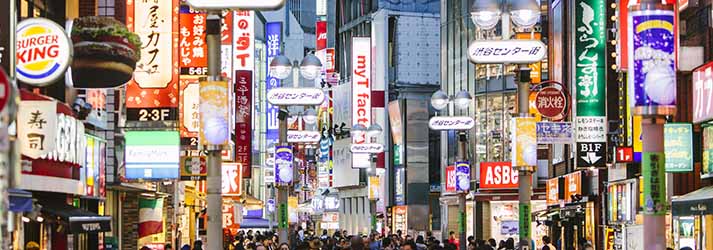February 2019
Japan’s benchmark Nikkei 225 Index reached its highest level since mid-December during February, boosted by US President Donald Trump’s decision to delay tariff increases on imports from China. Japan’s economy posted annualised growth of 1.4% during the final three months of 2018, having contracted by 2.6% in the previous quarter following a series of natural disasters.
- Japan’s industrial production dropped in January
- Australia’s key interest rate remained unchanged for a 30th straight month
- The RBA cut its economic growth forecast
To view the series of market updates through February, click here
Japan’s benchmark Nikkei 225 Index reached its highest level since mid-December during February, boosted by US President Donald Trump’s decision to delay tariff increases on imports from China that were scheduled to take effect on 1 March. Over February as a whole, the Nikkei 225 Index rose by 2.9%, the Topix Index rose by 2.6%, and the TSE Second Section Index – which represents medium-sized Japanese companies – climbed by 2.3%.
“The nuclear summit between the US and North Korea broke up without reaching agreement”
Japan’s economy posted annualised growth of 1.4% during the final three months of 2018, having contracted by 2.6% in the previous quarter following a series of natural disasters. Growth was boosted by a 2.4% increase in capital expenditure and a rebound in private consumption. Industrial production dropped sharply during January, dragged down by poor performance from the motor vehicle and electronics sectors. The annualised rate of core consumer inflation picked up from 0.7% in December to 0.8% in January, but remained far below the Bank of Japan’s (BoJ’s) target of 2%.
The Reserve Bank of Australia (RBA) left its key interest rate unchanged at 1.5% for a 30th consecutive month in February. RBA Governor Philip Lowe sounded a slightly more cautionary note on the country’s economic prospects, and the RBA cut its forecasts for economic growth to 3% this year and 2.75% next year. Downside risks to the outlook include falling property prices and a subdued outlook for household spending; on a global basis, headwinds include ongoing trade tensions and China’s economic slowdown. Although inflation is forecast to pick up, this is likely to take longer than previously anticipated.
The International Monetary Fund (IMF) expects Australia’s economic growth to remain above trend in the short term; however, medium-term growth could be undermined by a softer global economic environment, high levels of household debt, and weaknesses in the housing sector. The housing market is cooling, but debt levels remain high. The IMF predicts that economic growth of 3% in 2018 will ease to 2.7% in 2019 and then to 2.6% in 2020. During February, the ASX All Ordinaries Index rose by 5.3%.
South Korea’s benchmark index dipped as February drew to a close as the nuclear summit between the US and North Korea broke up without reaching agreement. The Kospi Index fell by 0.4% over the month. As expected, the Bank of Korea (BoK) maintained its key interest rate at 1.75%.
A version of this and other market briefings are available to use in our newsletter builder feature. Click here




